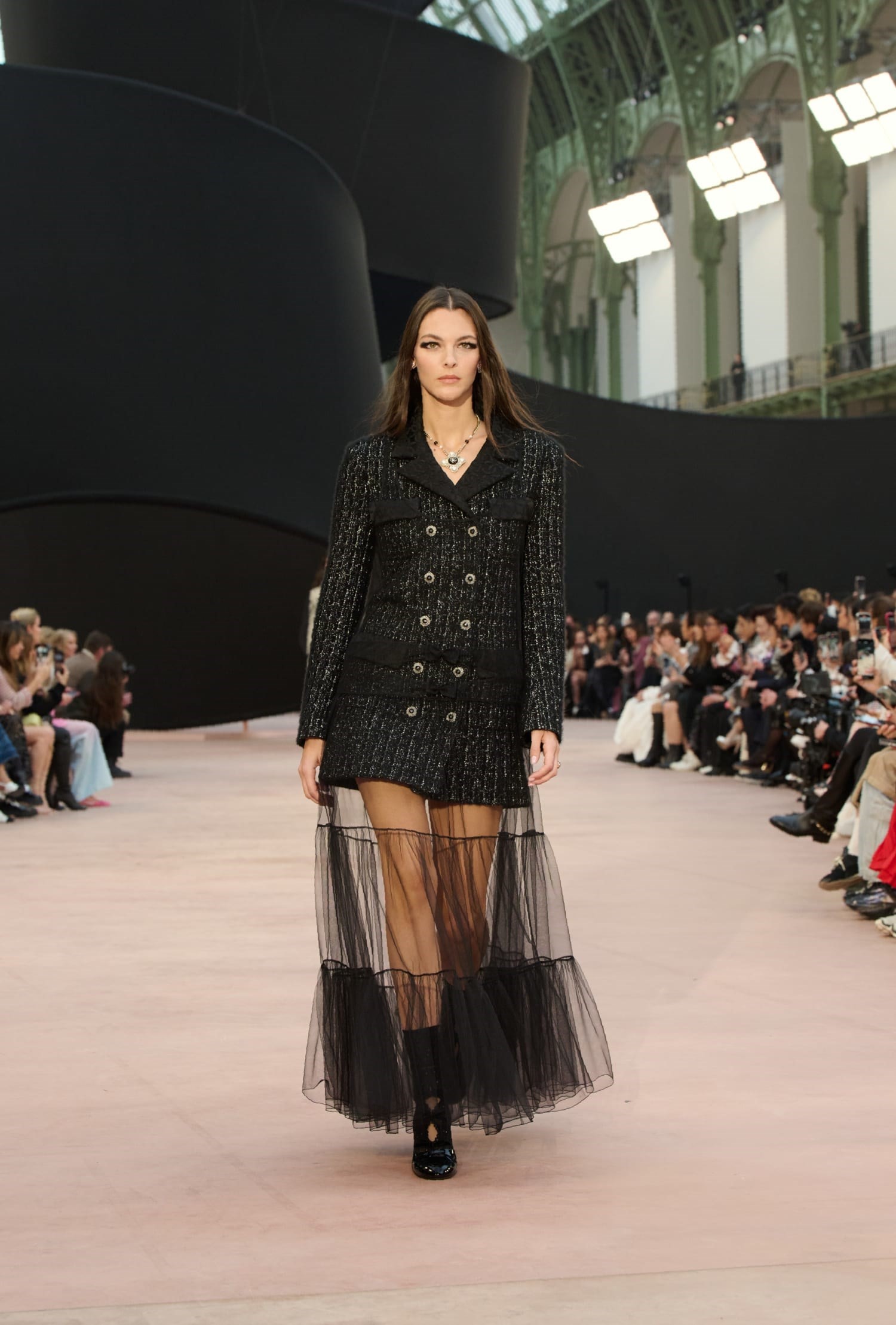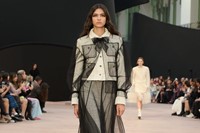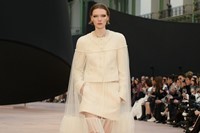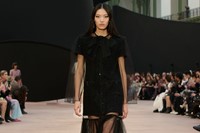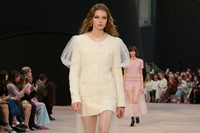The fil rouge at the Autumn/Winter 2025 Chanel show was actually a black ribbon – they were knotted into a bow on every invitation and then, blown up big, became a set piece created by scenographer Willo Perron that swirled, against gravity, into the air around the models. Black ribbons have been at Chanel since the very beginning: Gabrielle Chanel knotted them around the stark, simple hats she started her career with at the beginning of the last century. It was there at the end of her life too – at her final show, staged on 26 January 1971, 16 days after her death – that each model wore a black ribbon bow at the nape of her neck.
As Chanel waits for Matthieu Blazy to begin work on the house’s next era, it’s a natural moment to look back – to simple gestures, and reassuring reassertions of what the house stands for. The Chanel Creation Studio do a sturdy job in holding the fort – they deserve credit for creating beautiful clothes with enough innovation to keep clients excited, while everyone pauses before a brave new direction is unveiled. So, that notion of glancing back – incidentally, a theme that has imprinted across more than a few collections this season, and not only those of debuts in other established brands – is perhaps why the ghosts of past dresses seemed to dance over the top of the first few looks. Those were created with gossamer tulle veils that sketched out longer hems, puffed sleeves, sweet flounces, often reminiscent of historical costume – but were worn over the pragmatic uniform of the Chanel tweed suit, in various permutations. They were the literal foundations of outfits, but are also the codified foundation of the house today – they’re part of what Chanel stands for.


Generally speaking, that’s what this collection was rooted in – unmistakable gestures, materials, and motifs that spell out Chanel. Cashmere cardigans bound in braid, little black dresses, those suits, two-tone shoes. And the endless minute of the Chanel look – pearls were strung, camellias blossomed, and there were lots of ribbons, carved out in negative space as cut-out motifs on knit dresses, or expressed through swathes of knit, ribbons blown to XXL scale and knotted at the shoulder. Like the giant ribbony runway décor curling through the nave of the Grand Palais, this was part of a general surrealist play with proportion that, say, pumped pearls to fist-size to become the heel of high shoes, or wrapped around the body maxi-sized. And, again, that’s a natural course of action in a moment such as this – which is to say, a quiet moment for Chanel, versus a period of uncertainty for the wider world. The tack seemed to be to emphasise what people recognise and trust, to give them comfort and joy in the familiar.
That’s not to say there wasn’t experimentation – chiffon jeans? Trompe l’oeil silken tweed? But always it was toying with well-established house identifiers, re-asserting Chanel’s emblems and meaning, the language of Chanel. Soon that will be used to tell a different story, written by another hand.
